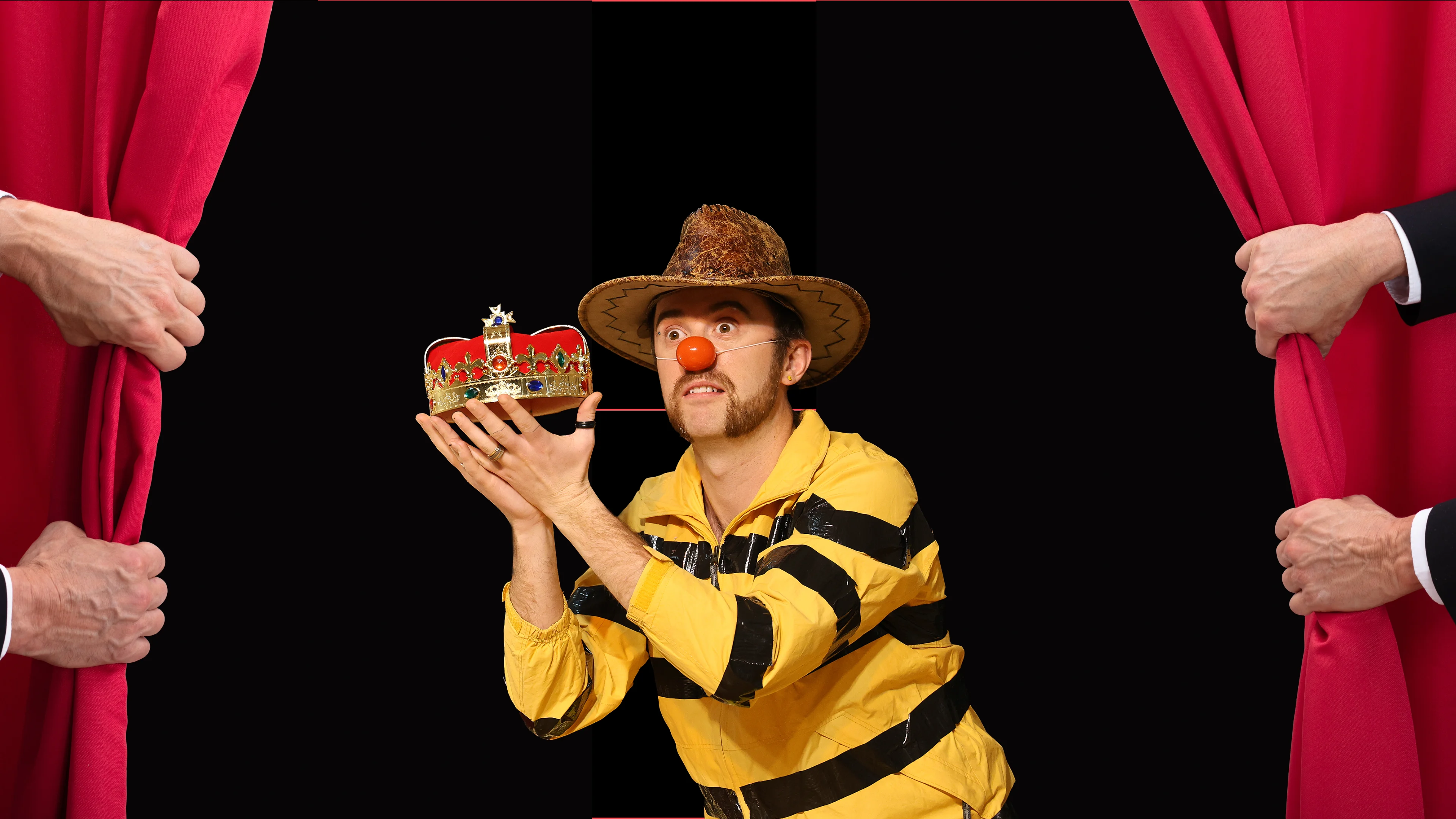
Taster Class In Clown Comedy
Theatre Deli, London
Learn More

Rhythm and timing are essential tools for comedians, shaping how audiences receive and respond to comedic material. Good timing controls laughter by building anticipation, highlighting key moments, managing information flow, and injecting surprise. Mastering rhythm means knowing exactly when to pause, accelerate, interrupt, or repeat - making even ordinary moments delightfully comedic.
Rhythm builds and interrupts momentum.
Silence and stillness highlight comedic beats.
Contrast and variation prevent monotony.
Managing tension and release enhances laughter.
Callbacks and repetition reinforce comedic patterns.
Timing controls audience information intake.
Building and Interrupting Momentum Comedy thrives on momentum - rhythmically building a scenario and then playfully interrupting it. Precise interruptions surprise the audience, drawing their attention to comedic beats and heightening the humorous effect.
Stillness, Silence, and Fixed Points Stillness and silence punctuate performances, clearly highlighting what's important or unexpected. A deliberate pause can shift focus, create tension and deliver laughs just by timing alone.
Contrast and Variation Effective comedy uses rhythmic variation to maintain audience engagement. Alternating fast-slow, loud-quiet or chaotic-calm patterns surprises and delights audiences, preventing predictability.
Tension and Release Timing allows comedians to build tension, which laughter then releases. Pausing before punchlines or comedic reveals increases audience anticipation, heightening the payoff.
Callbacks and Repetition Rhythm and precise timing are crucial for callbacks, reinforcing jokes by repeating and recontextualising comedic elements. The "Rule of Threes" is a classic example, where rhythmic repetition creates and subverts audience expectations.
Managing Information Flow Timing helps comedians control how much information is given at any moment, preventing audience overload. Pauses, repetition and careful pacing allow key ideas to land clearly, gradually revealing comedic details and ensuring clarity and enjoyment.
Interrupting Expectations Breaking an established rhythm generates comedic surprise. Unexpected silence or awkward timing disrupts audience predictions, intensifying laughter through surprise and novelty.
Physical Rhythm and Visual Comedy Comedic rhythm extends beyond words to physical movements. Precise timing transforms even simple physical acts into powerful comedic moments, as seen in classic visual comedy.
Ensemble Timing Group performances rely heavily on collective rhythm and timing. Ensemble comedy requires careful synchronisation, with each performer tuned into cues and shared beats, enhancing comedic dynamics.
Cultural Rhythms Different cultures favour distinct comedic rhythms - British dry pauses, American rapid-fire sitcom exchanges, or slapstick’s exaggerated timings. Understanding these variations helps comedians tailor performances to diverse audiences.
